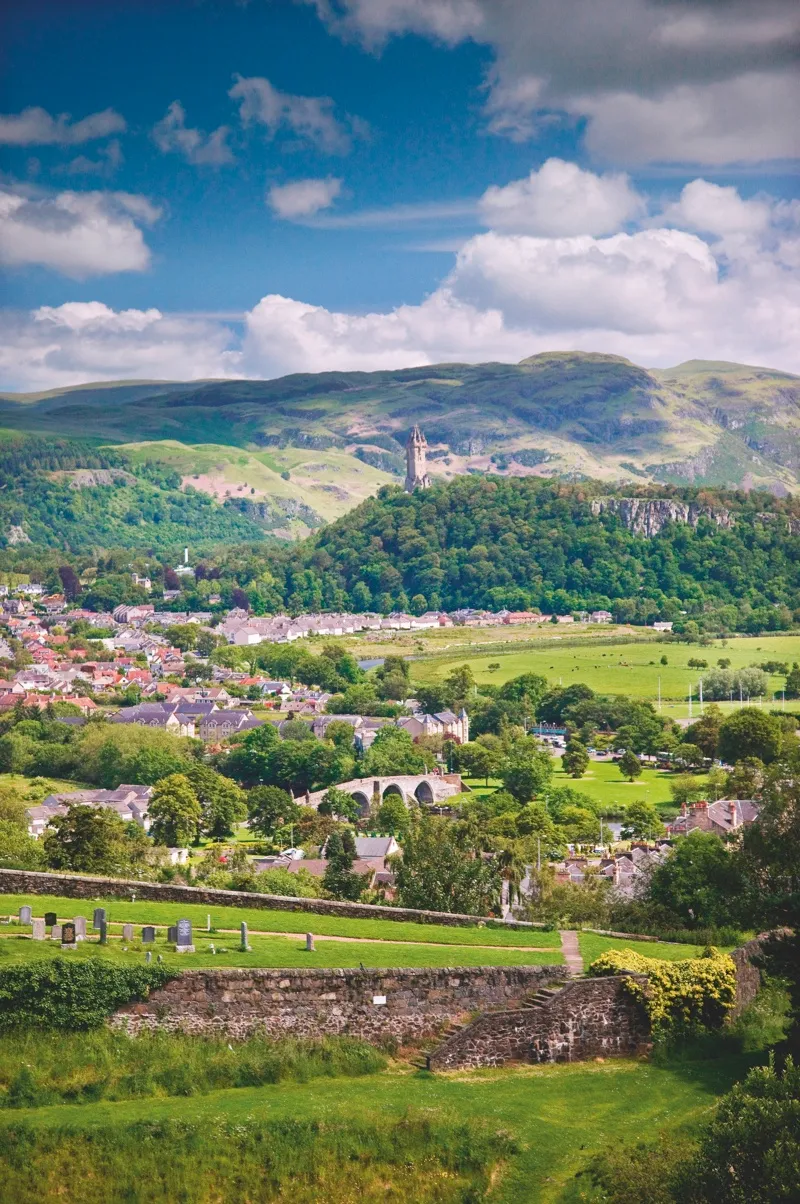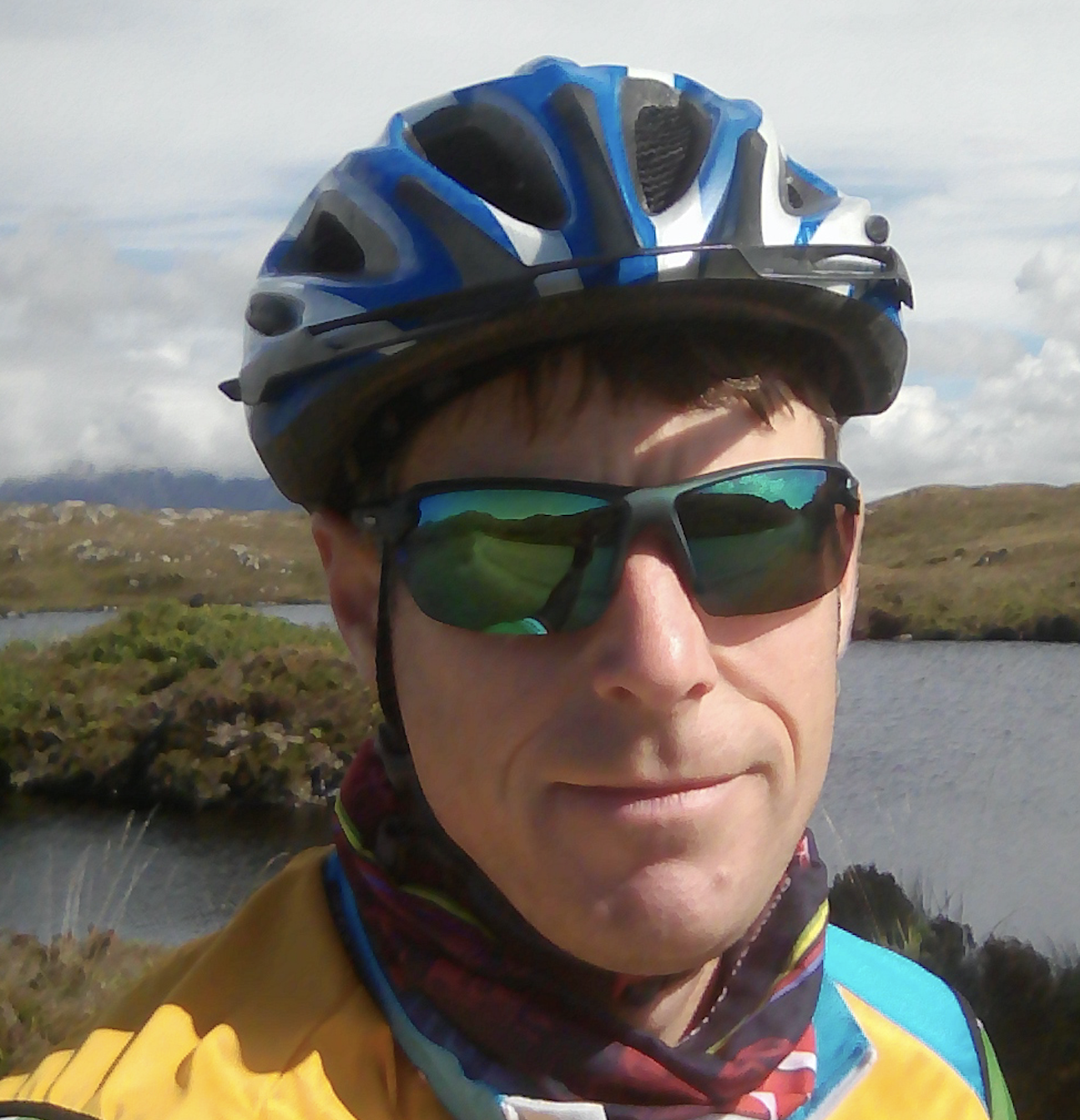In the extraordinary Stirling Castle, perched on a crag above the old market town, much can be learned about Scotland’s bloody past – and one of the most intriguing figures of the Tudor period, Mary, Queen of Scots (1542-1587).
Mary, Queen of Scots and Stirling Castle
The Tudor era runs from 1485, the start of Henry VII’s reign, until 1603, when James I of England and VI of Scotland ascends the throne. It was a period of vaulting ambition and religious conflict, as sovereigns battled to consolidate their authority and wealth. Mary, variously perceived as a pawn or a power player, lived and died at the centre of this storm.
From the reign of Alexander I in the 12th century until 1603, Stirling Castle was one of the principal royal residences in the kingdom of the Scots, explains Ross Blevins, the castle’s senior steward. Today, he continues, the fortress houses “arguably the finest collection of royal buildings anywhere in Scotland”.
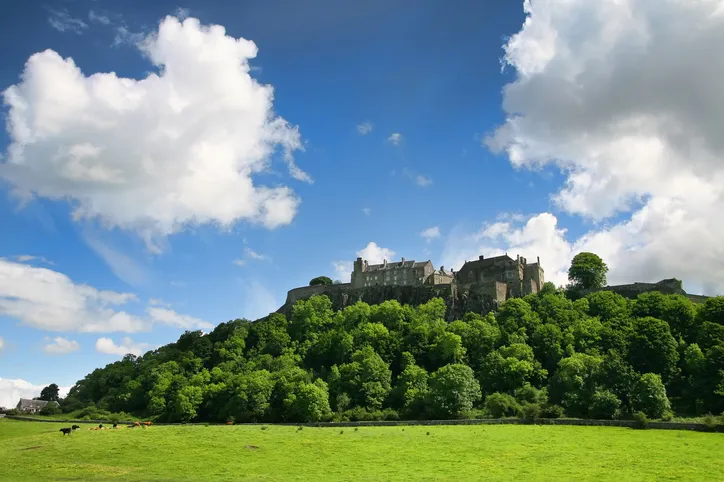
Pass under Stirling Castle’s black portcullis to follow in Mary’s footsteps through the refurbished apartments of The Royal Palace, first built by Mary’s father James V in the 16th century. Stunning regal hues and ornate tapestries fill the palace, as they would have done in the 1540s, when Mary was a young girl.
A Queen arrives
Mary was born at Linlithgow Palace in West Lothian on 8 December 1542. Just six days after her birth, James V died, and Mary became queen. She was crowned nine months later in Stirling Castle’s chapel in a reportedly quick investiture, with only a small congregation present. Contemporary accounts indicate that the young queen cried throughout her coronation. Sir Ralph Sadler, Henry VIII’s English ambassador in Scotland and a guest at the ceremony, scorchingly remarked that Mary was crowned with “such solemnitie as they do use in this country, which is not very costlie”.

Mary spent much of her first five years protected within the walls of Stirling Castle. But in 1548 she was sent to France, where, 10 years later she married the Dauphin, Francis. The following year, at the age of 14, Francis succeeded his father as King of France, and 15-year-old Mary became queen for the second time. Yet her elevation was short-lived, as Francis died at the age of just 16, and in 1561, Mary returned to Scotland.
Return to Scotland
Having spent so many years in France, Mary knew little about the political affairs of Scotland. She was also a devout Roman Catholic. Many began to regard her with suspicion, not least her cousin Elizabeth I, who had reigned in England since 1558 and was a staunch Protestant.
On her return, Mary spent much time within the stone walls of Stirling Castle, Ross explains. It was here that she fell in love with her second husband, Henry Stewart (Lord Darnley) in 1565, and the next year Queen Mary used it as the venue for the baptism of their son, the future James VI. The ceremony was accompanied by three days of festivities, with the Great Hall acting as the main venue.
Renaissance festival
For me, the Great Hall – refurbished to the time of its completion in 1503 – is the highlight of the castle. Nearby there are sprawling kitchens, recreated to illustrate how feasts were prepared. The banqueting hall blends striking, clean lines, magnificent oak beams and giant fireplaces. At one end, four pairs of tall windows spill light on to the dais where the king and queen once sat. The hall can be seen from miles around thanks to the exterior walls’ distinctive Royal Gold harling (a kind of traditional lime render).
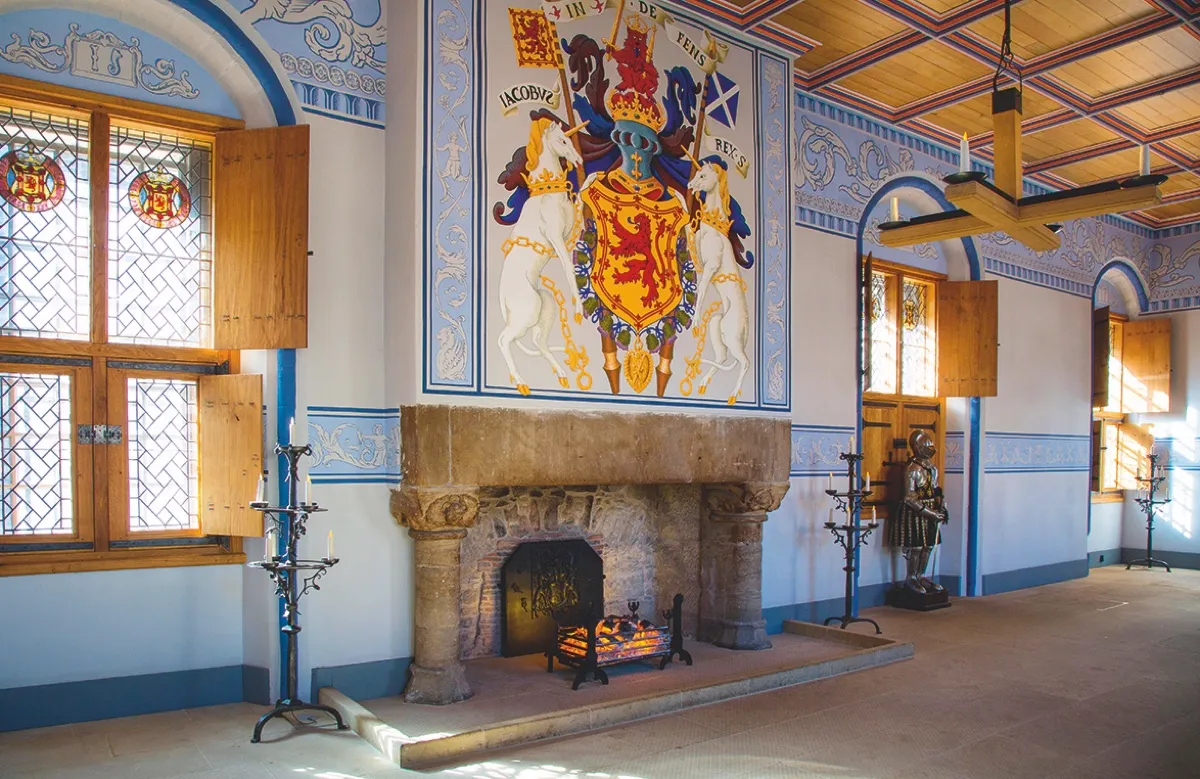
“The celebration for Prince James’s baptism is regarded as the first true Renaissance festival held in the British Isles,” Ross says. Proceedings culminated on the third night, with guests being ushered outside the castle walls to view a mock assault upon a fortress, designed especially for the occasion. This was joined by a fireworks display, thought to have been one of the first held in the British Isles. The festival was hailed as ‘Queen Mary’s Triumph’.
Abdication and death
Yet Mary did not succeed in reconciling those who opposed her. She became estranged from Darnley and, by the end of 1566, had befriended James Hepburn, Earl of Bothwell. The next year, Darnley’s body was found in the orchard of Kirk o’ Field in Edinburgh.
That April, after visiting her son at Stirling Castle, Mary is said to have been abducted by Bothwell, the chief suspect in Darnley’s murder, and was taken to Dunbar Castle.
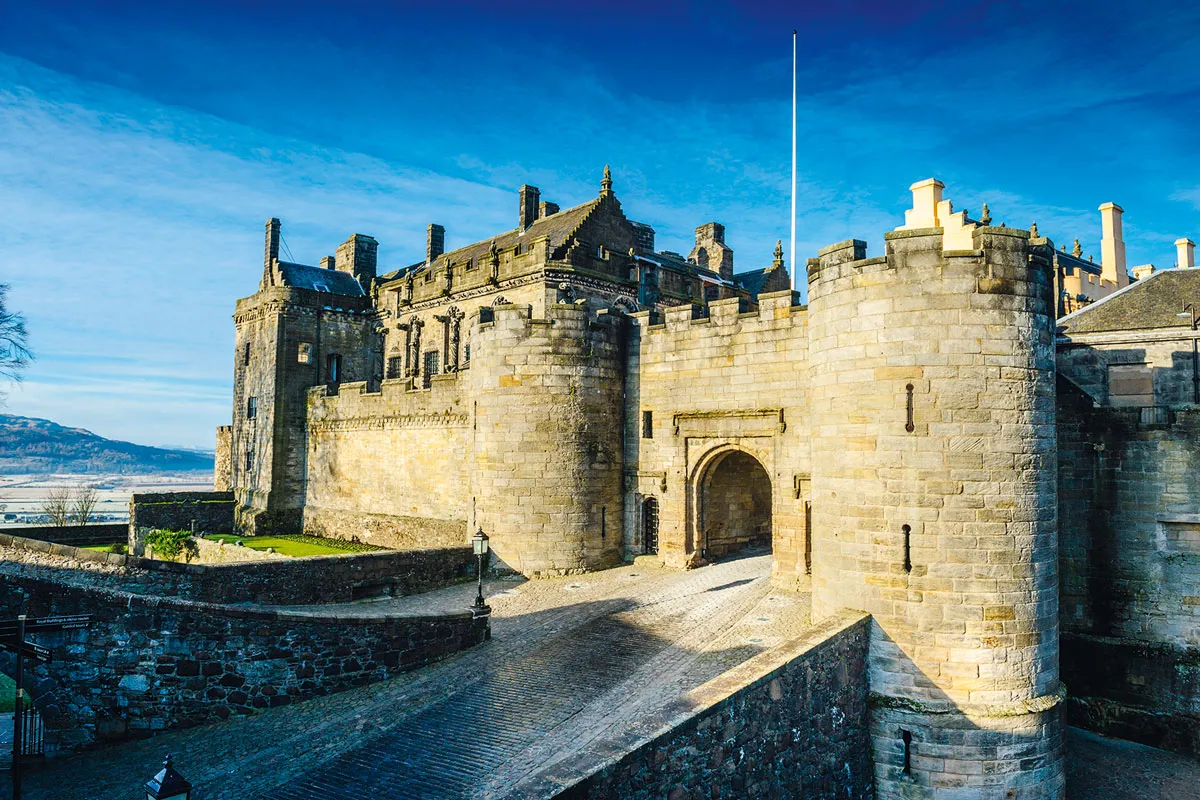
The Scottish nobility were outraged when they realised that Mary, not long after, had wed her captor. Confronted in a battle near Edinburgh, she surrendered, and was later imprisoned at the water-bound Lochleven Castle.
On 24 July 1567, Mary was forced to abdicate in favour of her infant son, who became King James VI of Scotland. Although she escaped the island castle with help from friends, and rallied an army, she lost the subsequent battle.
Mary fled south to seek protection from the Queen, but in spite of the initial amity, Elizabeth now felt threatened by Mary’s claim to the English crown, and had her imprisoned.
Some 19 years later, after corresponding with a plotter, Mary was tried for treason and on 8 February 1587, at the age of 44, she was beheaded. Her son James succeeded Elizabeth as England’s sovereign in 1603, uniting the monarchy of England and Scotland for the first time.
Relive Mary’s turbulent life with this short castle walk.
The Walk
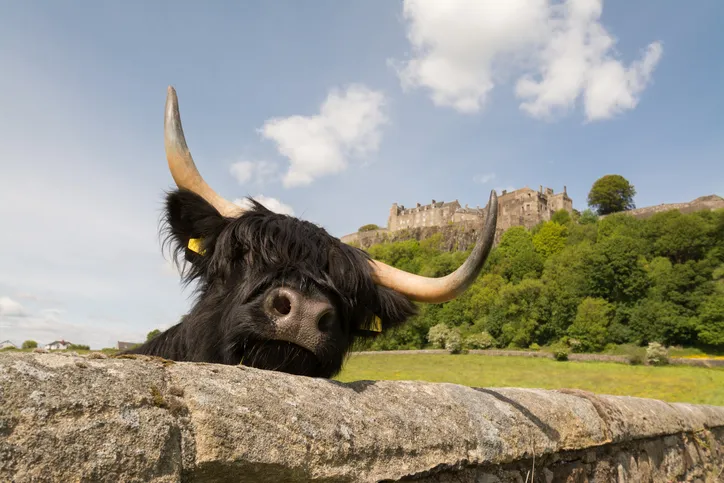
1. Skirting the walls
With the castle at your back, go right down steps to meet a path junction. Turn right on a leafy trail below the castle walls.
2. Off with your head
Once you reach the northern end of the fortifications, cross a road and follow the path to Motte Hill. You will soon reach a fork – descend left to a beheading stone with views of Wallace Monument ahead.
3. To the turrets
Return to the fork and bear left, signed Castlehill, heading to a grassy bank opposite the castle. Gaze up at its turrets and then walk round to meet the road, climbing left up a series of steps. These lead back to the castle esplanade.
4. Rambler’s respite
Walk through the car park to another row of steps and the Portcullis Hotel. The lodging serves traditional food and drink at both lunch and dinner, making it a great spot to recharge weary batteries. Feeling especially tired? Why not sleep over? Turn right on to Castle Wynd, merging on to Mar Place and historic St John Street.
5. Castle view
After a few minutes you will reach Corn Exchange Road on your right. Walk down the street and take another right on to the Back Walk trail. Continue to Lady’s Rock for a commanding view and the return path to the castle.
